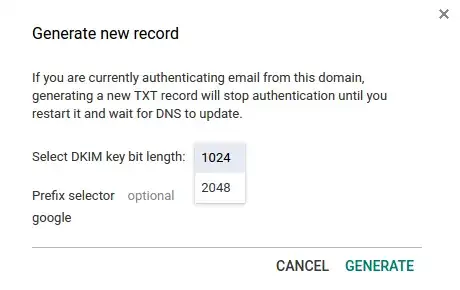Update: It has been confirmed with Namecheap that their DNS is incompatible with Google Apps for Domains DKIM keys
https://twitter.com/Namecheap/status/720940172196581376
There is no ETA on when or even if they will have it fixed.
I signed up for Google Apps for Domain recently and am trying to setup DKIM for gmail/email. The Google Apps interface only has a "Generate new record" button
Clicking "Generate new record" only has one option, what prefix
namecheap's UX allows me to paste the entire record in (see it ends in AB)
but once it's saved checking it's been truncated to 256 characters.
Talking with customer service this is a limit of namecheap.
I don't see any other options in Google Apps->GMail to get a smaller key.
Is there some workaround or does this means Namecheap is incompatible with Google Apps Gmail DKIM?




